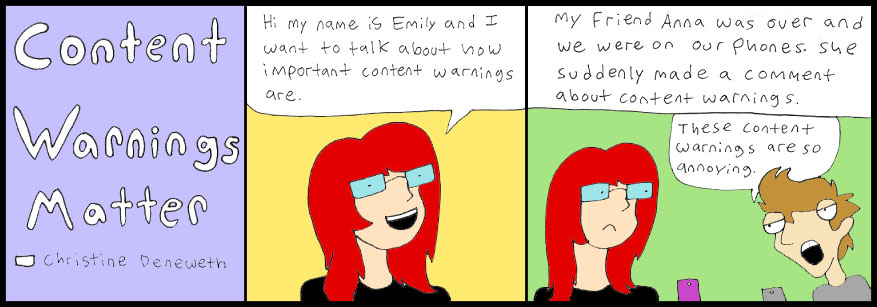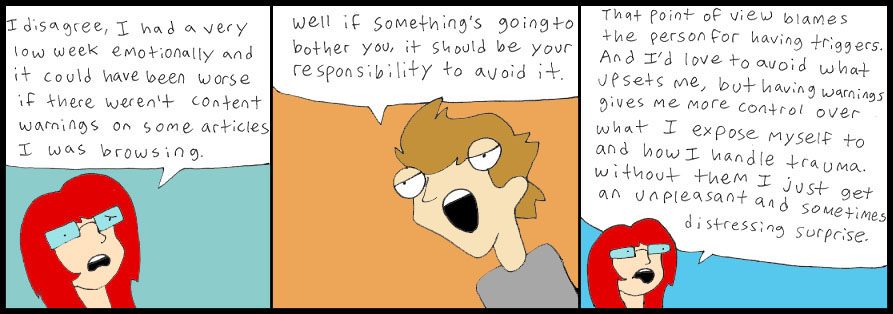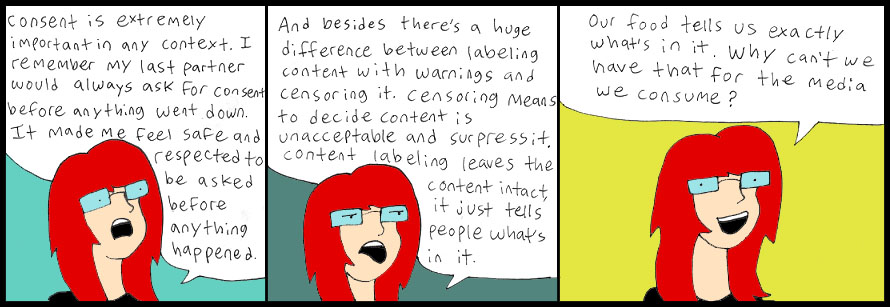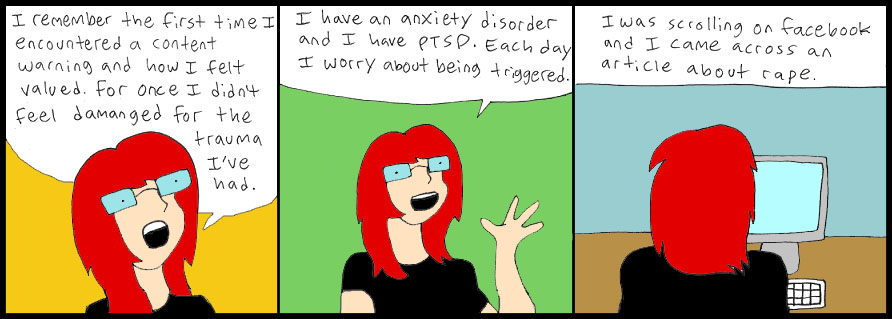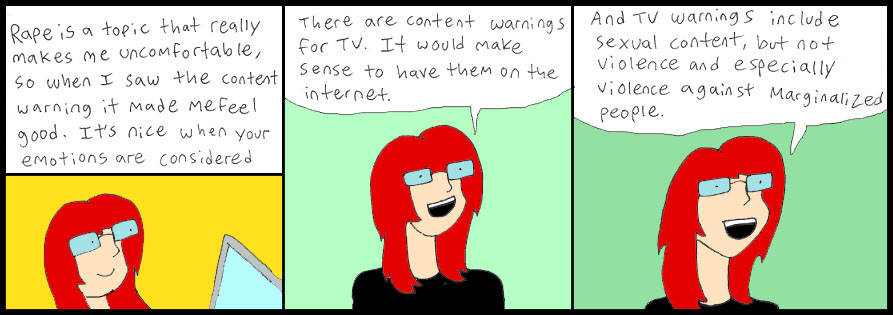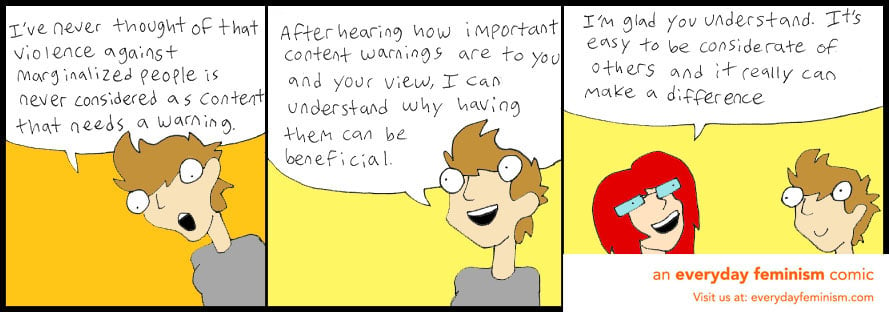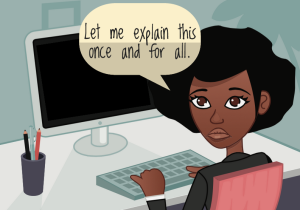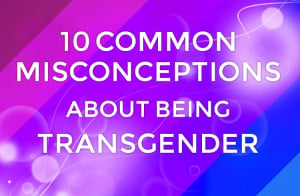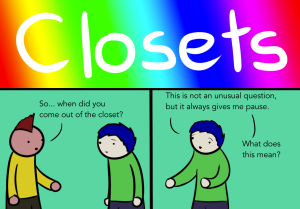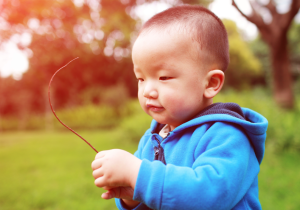Panel 1
Text: Trigger Warnings Matter – Christine Deneweth
Panel 2
Emily talking and smiling. She has long bright red hair and is wearing a black shirt.
Emily: Hi. My name is Emily, and I want to talk about how important content warnings are.
Panel 3
Emily and Anna on their phones. Anna has short red hair and is wearing a gray shirt.
Text: My friend Anna was over, and we were on our phones. She suddenly made a comment about content warnings.
Anna: These content warnings are so annoying.
Panel 4
Emily talking.
Emily: I disagree. I had a very low week emotionally, and it could have been worse if there weren’t content warnings on some articles I was browsing.
Panel 5
Anna talking.
Anna: Well if something’s going to bother you, it should be your responibility to avoid it.
Panel 6
Emily talking.
Emily: That point of view blames the person for having triggers. And I’d love to avoid what upsets me, but having warnings gives me more control over what I expose myself to and how I handle trauma. Without them, I just get an unpleasant and sometimes distressing surprise.
Panel 7
Emily talking.
Emily: What you tell people to simply avoid things that trigger them, that also diminishes their trauma, their oppression, and way they need to recover from the pain they’ve experienced.
Panel 8
Anna yelling and waving her arm.
Anna: Well, content warning are also a form of censoring. It limits access to the content, and it is categorized with labels that not everyone agrees with.
Panel 9
Emily talking.
Emily: The content isn’t being censored. It is being labeled in a way that allows readers to consent to what they are exposed to.
Panel 10
Emily talking.
Emily: Consent is extremely important in any context. I remember my last partner would always ask for consent before anything went down. It made me feel safe and respected to be asked before anything happened.
Panel 11
Emily talking narrowing her eyes.
Emily: And besides, there’s a huge difference between labeling content with warnings and censoring it. Censoring means to decide content is unacceptable and suppress it. Content labeling leaves the content intact; it just tells people what’s in it.
Panel 12
Emily talking and smiling
Emily: Our food tells us exactly what’s in it. Why can’t we have that for the media we consume?
Panel 13
Anna talking.
Anna: They can also cause more harm than they can help. They can cause stress because of the anticipation of worrisome content.
Panel 14
Emily talking.
Emily: But think about all the stress that would be caused if they weren’t there. Having them there at least gives people options.
Panel 15
Emily talking and smiling.
Emily: It means a lot to the people. It shows that our emotional well being is important enough to be considered.
Panel 16
Emily talking.
Emily: I remember the first time I encountered a content warning and how I felt valued. For once, I didn’t feel damaged for the trauma I’ve had.
Panel 17
Emily talking and smiling.
Emily: I have an anxiety disorder, and I have PTSD. Each day, I worry about being triggered.
Panel 18
Emily on her computer.
Text: I was scrolling on Facebook, and I came across an article about rape.
Panel 19
Emily on her computer.
Text: Rape is a topic that really makes me uncomfortable, so when I saw the content warning, it made me feel good. It’s nice when your emotions are considered.
Panel 20
Emily talking and smiling.
Emily: There are content warnings for TV. It would make sense to have them on the Internet.
Panel 21
Emily talking and smiling.
Emily: And TV warnings include sexual content, but not violence and especially violence against marginalized people.
Panel 22
Anna looking down and talking.
Anna: I never thought of that. Violence against marginalized people is never considered as content that needs a warning.
Panel 23
Anna talking and smiling.
Anna: After hearing how important content warnings are to you and your view, I can understand why having them can be beneficial.
Panel 24
Emily and Anna smiling.
Emily: I’m glad you understand. It’s easy to be considerate of others, and it really can make a difference.


